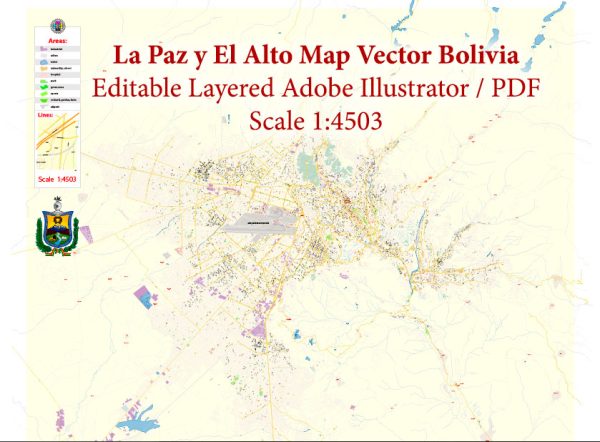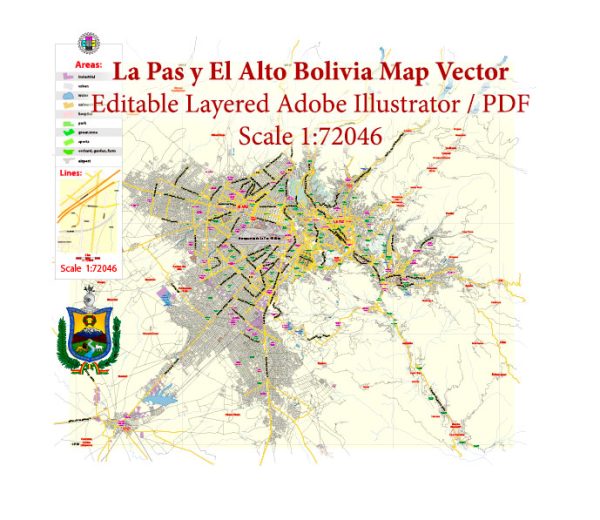La Paz and El Alto are two interconnected cities located in Bolivia, South America, and together they form a unique metropolitan area. Let’s explore each city in detail:
La Paz:
- Geography:
- La Paz is the administrative capital of Bolivia and the third-largest city in the country after Santa Cruz and El Alto.
- It is situated in a deep valley surrounded by the high-altitude Andes Mountains, making it one of the highest capital cities in the world.
- Culture and Heritage:
- La Paz has a rich cultural heritage with a mix of indigenous, mestizo, and colonial influences.
- The city is known for its colonial architecture, historic landmarks, and vibrant markets where traditional crafts and goods are sold.
- Economy:
- La Paz serves as Bolivia’s political and administrative center, housing government institutions and foreign embassies.
- The city’s economy is diverse, with sectors such as finance, commerce, and tourism playing significant roles.
- Attractions:
- Witches’ Market (Mercado de las Brujas): Famous for its traditional remedies, herbs, and mystical items.
- Plaza Murillo: The main square featuring important government buildings, including the Presidential Palace.
- Valle de la Luna (Valley of the Moon): A unique geological formation just outside the city.
- Transportation:
- The city is served by an extensive public transportation system, including buses and cable cars.
- The La Paz-El Alto International Airport connects the city to domestic and international destinations.
El Alto:
- Geography:
- El Alto is located adjacent to La Paz, on the Altiplano plateau, and is the second-largest city in Bolivia in terms of population.
- It is situated at an even higher altitude than La Paz.
- Population and Demographics:
- El Alto is known for its rapid population growth and is a major urban center with a predominantly indigenous population.
- The city has experienced significant migration from rural areas, contributing to its dynamic and diverse culture.
- Economy:
- El Alto has a bustling informal economy with vibrant markets and street vendors.
- Small businesses and local entrepreneurship are widespread, and the city plays a crucial role in Bolivia’s economy.
- Transportation:
- The city is well-connected to La Paz through various transportation options, including cable cars, buses, and roads.
- El Alto also has an international airport, El Alto International Airport, which is one of the highest airports in the world.
- Cultural Significance:
- El Alto is known for its lively street culture, traditional festivals, and colorful folkloric events.
- Aymara culture is prevalent, and the city has become a symbol of indigenous identity and empowerment.
Together, La Paz and El Alto form a vibrant and diverse metropolitan area, showcasing the blend of traditional and modern elements that make Bolivia’s culture unique. The high-altitude setting, indigenous influences, and economic dynamism contribute to the distinct character of this region.
Vectormap.Net provide you with the most accurate and up-to-date vector maps in Adobe Illustrator, PDF and other formats, designed for editing and printing. Please read the vector map descriptions carefully.



 Author: Kirill Shrayber, Ph.D.
Author: Kirill Shrayber, Ph.D.